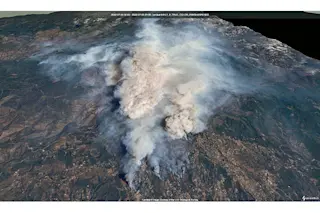So far, California's Oak Fire blazing near Yosemite National Park has burned through through 14,281 acres — an area equivalent to the size of Manhattan Island. That makes it California's biggest wildfire this season.
As of Sunday, July 24, it has forced at least 3,000 people to evacuate, has destroyed 10 structures, some of them homes, and is completely uncontained, according to the California Department of Forestry and Fire Protection. The cause of the blaze, which began in the afternoon of July 22 about two miles northeast of Mariposa, is under investigation.
“The fire is moving quickly," Daniel Patterson, a spokesman for the Sierra National Forest, said Saturday, quoted by Wildfire Today. "This fire was throwing embers out in front of itself for up to two miles yesterday. These are exceptional fire conditions."
The blaze exploded in intensity and size on Saturday. Here's what that looked like from space, as ...














